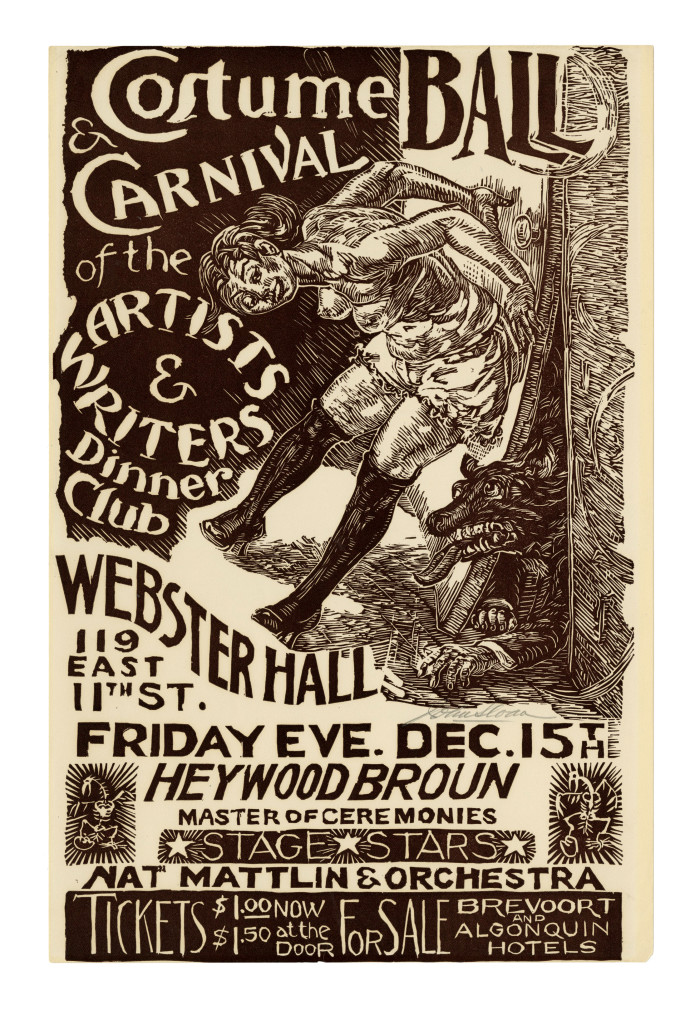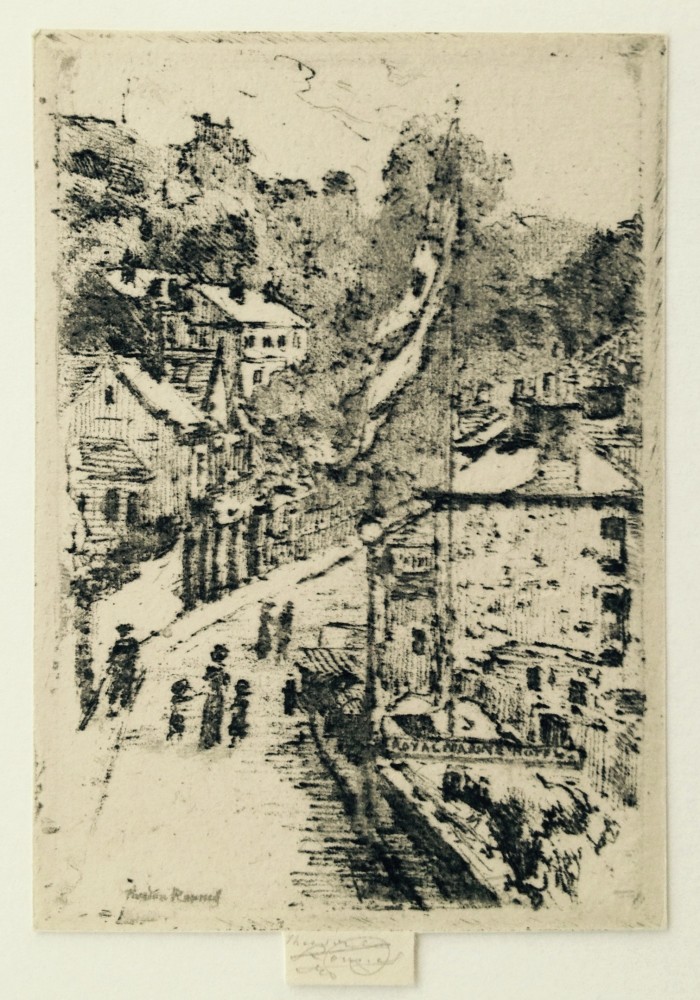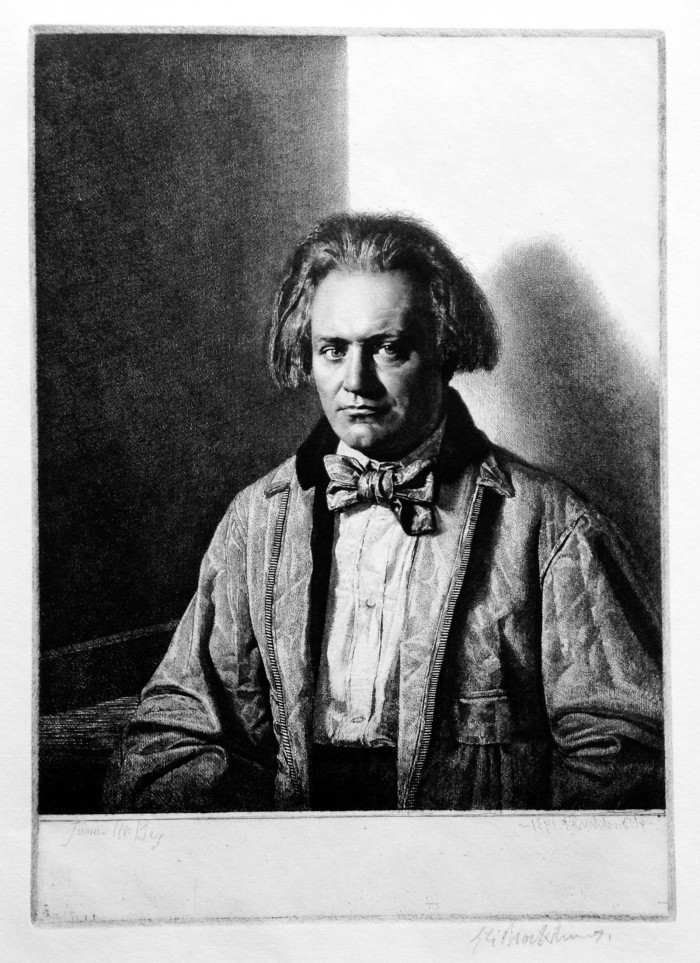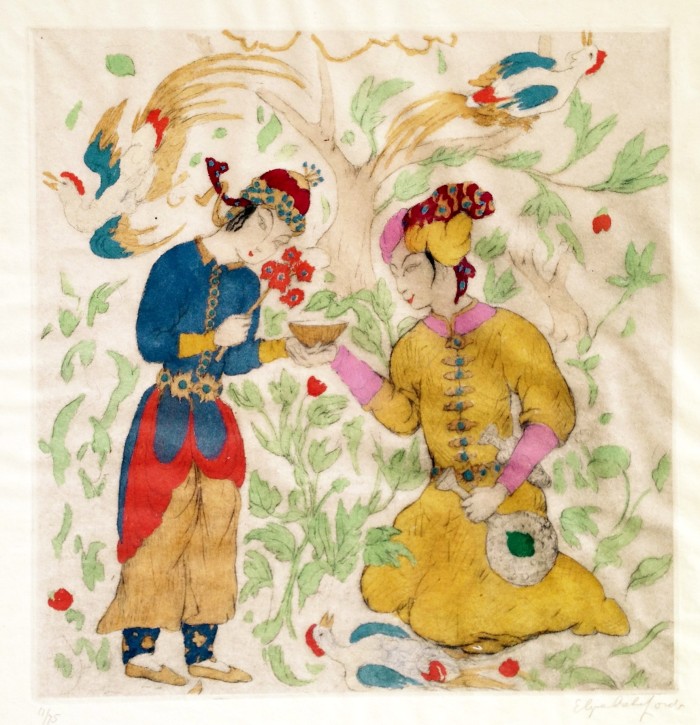Le Pont au Change
Thursday, August 27th, 2015Charles Meryon (1821-1868), Le Pont au Change, 1854, etching. Reference: Delteil/Wright 34 fifth state (of twelve), Schneiderman 40, fifth state (of 12) [with the signature, date and address in the plate in the margin below]. On old very fine and thin laid paper with a “Contribution Directes” watermark. In very good condition, with margins 6 1/8 x 13 1/8, the sheet 7 1/8 x 13 3/4 inches.
Provenance: J.H. Wrenn (with his stamp verso, Lugt 1475), and then by descent.
P. & D. Colnaghi & Co., London (their stock no. in pencil on the verso C27108)
Kennedy Galleries, New York (their stock no. in pencil on the verso a35112)
A extremely fine, richly printed atmospheric impression, in a brownish/black ink, printed personally by the artist, with a veil of plate tone, wiped selectively in places such as the wall and faces of the buildings at the right.
From a point of view at water level we can see the Pompe de Notre Dame (the old water pump) beyond the bridge, and the Palais de Justice and Tour de Horloge on the Isle de la Cite at the right. In the water a man, presumably drowning, reaches toward a boat, but those in the boat are turned in the other direction, looking toward the balloon marked Speranza (hope) in the sky. On the bridge a hearse and a parade of mourners walk toward the left, as a group of soldiers at the far left marches toward them.
Meryon made a few changes in the figures and clouds in the next state (the 6th), and removed the balloon in the seventh state; then, in 1859-60 he famously added a flock of huge birds to the sky – this was variously interpreted as the result of the influence of Poe (The Raven), or as evidence of Meryon’s continuing mental instability after his stay at the institution Clarenton; and of course there were other possibilities. Indeed, the meanings of the print in this earlier state – the ironies of the conjunction of the balloon Speranza, the drowning man and those turning away from him, and the funereal procession, for example – have been the subject of much speculation as well.
It is however indisputable that Le Pont au Change, particularly in this early state, is one of the most dramatic and beautiful of Meryon’s compositions, and a great icon of mid-19th Century printmaking.




